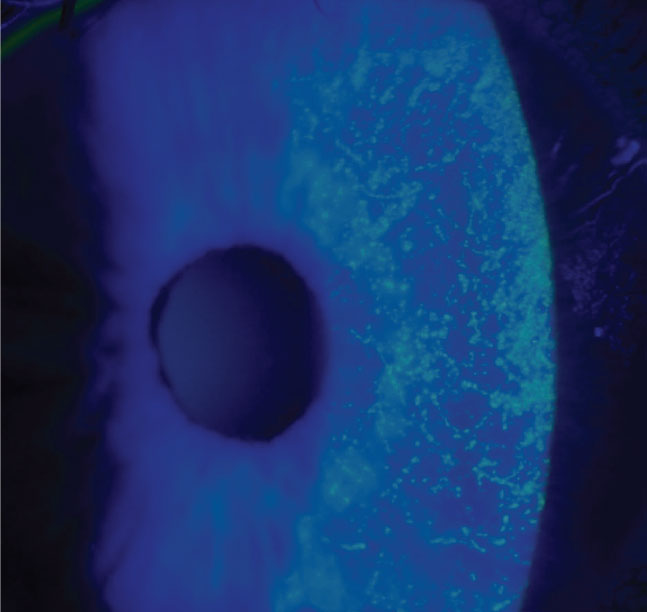 |
The presence of severe dry eye symptoms in patients could threaten the accuracy of VF tests. Click image to enlarge. |
Conducting accurate VF assessments is imperative to good clinical decision-making when it comes to managing or treating patients with a vision-threatening ocular disease, such as glaucoma. Misleading test results can complicate diagnosis and monitoring of progression. Investigators in a recent study made an important observation that the reliability of VF tests could be affected if the patient has dry eye, especially if their symptoms are more severe.
Patients included in the study were from a VA hospital and diagnosed with glaucoma, glaucoma suspect or ocular hypertension (n=494). Each patient completed the five-item dry eye questionnaire followed by VF testing, after which reliability metrics were calculated. The standard metrics included fixation loss, false positive and false negative rates. The investigators recorded gate tracking metrics including the percent of stimuli with gaze deviation and the percent of stimuli with tracking failure.
Although there was no association between dry eye symptom severity and standard reliability metrics or most gate tracking metrics, the data did show that tracking failure frequency had a positive correlation to symptom severity. The use of artificial tears was also linked to the severity of dry eye symptoms, though no direct relationship was shown between symptom severity and glaucoma medication use.
“Many prior studies have shown dry eye signs and symptoms increase with the number of medications used,” the study authors noted. “However, many of these studies included only glaucoma patients and excluded patients with a history of intraocular surgery. Our study population may differ from prior studies because a majority of the patients were not on any drops.”
Another finding from the study was that tracking failure frequency was greater in the left eye, which was tested after the right eye in every subject. The investigators pointed out that finding hasn’t been observed in prior studies on gate tracking metrics. “The difference between left and right eyes may be due to an increase in blink frequency, as prior studies have demonstrated an increase in blink frequency in the second eye tested during VF examination,” they suggested. “Alternatively, tasks requiring concentration decrease tear film stability, so the second eye tested may have greater rates of failure of gaze tracking acquisition due to a poor corneal light reflex.” However, they noted that they cannot rule out this increase in the left eye being related to laterality rather than to the order of testing.
Be aware of the possibility that VF test reliability may be influenced when examining a patient who reports severe dry eye symptoms. The investigators also noted that the acceptable range or threshold for tracking failure frequency may be different between eyes.
Camp AS, Long CP, Galor A, et al. Dry eye symptom severity and visual field reliability metrics. J Glaucoma. March 18, 2022. [Epub ahead of print]. |

